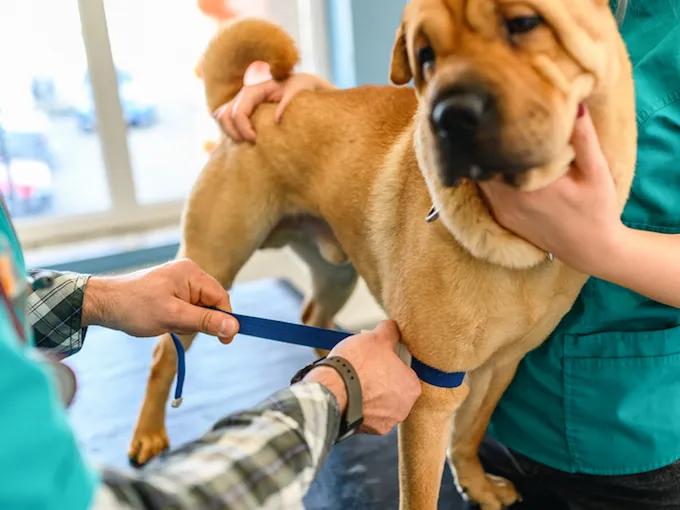Inflammation of the superficial veins in dogs affects the veins closest to a dog’s skin. Usually, thrombosis or infection is the cause of the condition.
The condition affects young and old dogs more than middle-aged dogs.
Technically, the condition is also known as phlebitis in dogs.
If you see the signs of the condition in your dog, then get to a veterinarian for a proper diagnosis and treatment.
Here’s what you should know about the symptoms, causes, and treatments for the condition.
Symptoms of Inflammation of the Superficial Veins in Dogs
The condition produces a range of symptoms. For instance, some of the most common symptoms include:
- Skin reddening
- Veins that feel warm to the touch
- Swollen skin
- Acting lethargic
- Swollen veins
- Fever
Causes of Inflammation of the Superficial Veins in Dogs

The cause of the condition is usually a trauma that becomes infected. For example, improper use of a catheter can cause the condition.
Additionally, the following factors can cause the condition:
- Obesity
- Kidney problems
- Pregnancy
- Immune system issues
- Heart issues
Finally, younger and older dogs seem to suffer from the condition the most.
Treatments for Inflammation of the Superficial Veins in Dogs
Firstly, your vet will ask about your dog’s symptoms. Secondly, your vet will ask about your dog’s complete medical history.
Thirdly, a full physical examination will be carried out. Blood and urine tests will also be taken. Additionally, a Doppler test can monitor your dog’s blood flow and blood pressure.
Finally, X-rays and imaging techniques can be used to confirm the condition.
Generally, treatment involves antibiotics. This is to clear up any infection. As always, if your vet prescribes your dog any medicine, make sure to stick to the correct dose and frequency instructions. Also, complete the full course of medicine.
Usually, antibiotics will treat your dog’s condition in around three weeks.
Have you ever cared for a dog who suffered from this condition? How did your vet help your dog recover? Let us know in the comments section below.









